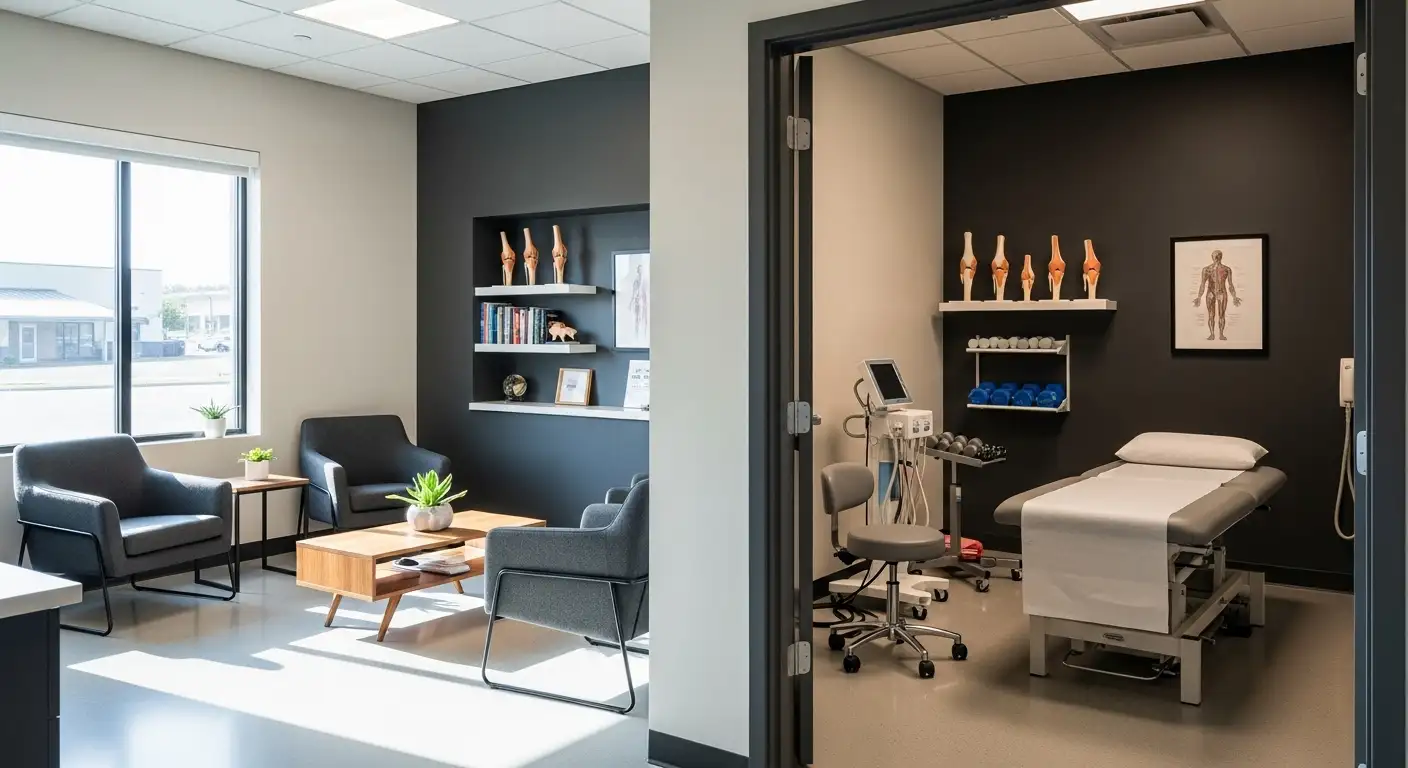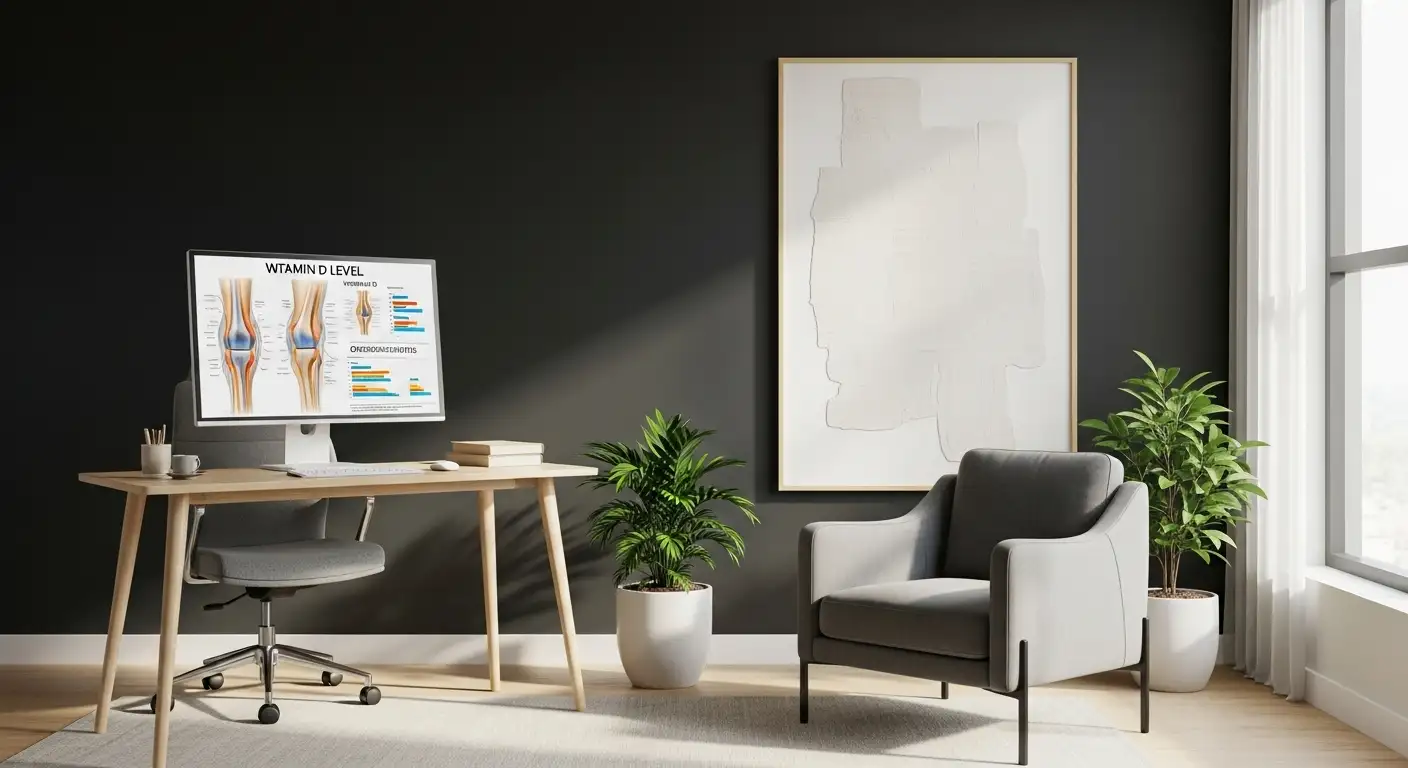Understanding Knee Flexion ROM

Importance of Knee Flexion Range of Motion
Knee flexion plays a critical role in an individual's daily activities, influencing the ability to perform essential tasks such as standing up from a chair without assistance. Adequate knee flexion is necessary for maintaining independence and engaging in various movements throughout the day, such as kneeling, walking, and climbing stairs. The normal knee flexion range is approximately 135°, which allows the heel to be brought close to the buttocks. Following surgical procedures, restoring full knee flexion range of motion (ROM) is vital for regaining functional mobility and overall quality of life. The ideal knee ROM spans from 0º extension to 130º flexion, which is important for effective rehabilitation and recovery from knee surgeries [1].
MeasurementDegreesFull Extension0ºNormal Flexion135ºIdeal Flexion Range0º to 130º
Factors Affecting Knee Flexion
Multiple factors influence an individual's knee flexion capabilities. Studies indicate that preoperative conditions significantly affect postoperative outcomes, particularly after total knee arthroplasty. For instance, an increase of 10° in the pre-flexion angle correlates with approximately a 6.5° increase in post-flexion. Additionally, a 10° reduction in the pre-femorotibial angle results in nearly a 2.1° increase in knee flexion post-surgery.
Other significant factors impacting knee flexion include:
These elements are essential in predicting the likelihood of achieving a knee flexion ROM of at least 110° after surgery, underscoring the importance of individualized assessments during rehabilitation programs. Understanding these factors is crucial for effective recovery and may help prevent ongoing knee pain and other complications related to limited mobility.
Ideal Knee Flexion Range
Understanding the optimal knee flexion range plays a significant role in maintaining mobility and overall quality of life. Here, we will explore the expected range of motion and the impact of knee flexion on daily activities.
Expected Range of Motion
The normal range of motion for a healthy knee joint typically includes flexion up to 135-155 degrees and extension to 0 degrees. This range is essential for various activities, from walking to bending down. In a prone position, the expected range of motion for knee flexion is about 135 degrees Physiopedia.
Flexion TypeDegreesNormal Flexion Range135 - 155Prone Position Flexion135Extension0
Achieving this range is crucial for navigating daily tasks without discomfort. According to X10 Therapy, adequate knee flexion is necessary for essential movements, such as standing up from a chair.
Impact of Knee Flexion on Mobility
Knee flexion directly affects an individual's capabilities, such as the ability to perform common actions like sitting down and getting up from a seat or climbing stairs. Limited knee flexion can lead to difficulties in bending the leg and severely impact mobility.
The ability to achieve approximately 110° of knee flexion post-surgery, particularly after total knee arthroplasty, is influenced by various factors including preoperative knee-flexion range and postoperative strength PubMed Central. This contributes to overall mobility, allowing individuals to engage in activities they enjoy without restriction.
Monitoring and maintaining an optimal knee flexion range should be a priority for anyone experiencing knee-related issues. For those with knee pain while walking, techniques to improve knee flexion may significantly reduce discomfort and enhance daily function. If individuals experience sensations such as pain or a feeling of instability, exploring resources related to tight hamstrings and knee pain or kneeling hamstring stretches could provide relief and improve mobility.
Recovery and Rehabilitation
Achieving optimal knee flexion is a critical component of recovery after knee surgery or injury. Individuals must focus on regaining their range of motion to ensure successful rehabilitation and return to daily activities.
Achieving Optimal Knee Flexion
The ideal knee flexion range of motion (ROM) is generally from 0º of extension to 130º of flexion. This range is essential for performing daily tasks, such as standing from a seated position without needing assistance [3]. In the early stages of recovery, it is crucial to achieve a knee flexion ROM greater than 90 degrees. This milestone helps reduce fluid build-up in the joint, promotes quicker recovery, and lays the foundation for overall range of motion gains.
Knee Flexion MilestonesImportance0º to 90ºEssential for sitting, standing, and basic mobilityGreater than 90ºCritical for advanced recovery and rehabilitation130ºOptimal for full functional capacity
Physiotherapy Interventions
Physiotherapy plays a vital role in achieving optimal knee flexion and overall recovery. A physiotherapist can provide tailored interventions such as exercises, stretches, and mobilization techniques designed to improve knee function. These interventions may include:
In the context of total knee arthroplasty, specific factors such as preoperative knee-flexion ROM and postoperative knee-extensor strength significantly influence the ability to achieve a successful knee-flexion range. Proper assessment and strategic rehabilitation interventions can lead to improvements in knee function [2]. For individuals looking to enhance recovery outcomes, engaging with a knee pain specialist may be beneficial.
As recovery progresses, continued attention to knee flexion and overall joint health will greatly impact one’s ability to engage in daily activities and maintain an active lifestyle.
Common Causes of Limited ROM
Knee flexion range of motion (ROM) can be significantly affected by various factors, including diseases, injuries, and postoperative conditions. Understanding these causes can aid in identifying treatment options and recovery strategies.
Osteoarthritis and Joint Diseases
Osteoarthritis is a degenerative joint disease that can lead to limited range of motion in the knee. It typically results from joint space narrowing, osteophyte formation, and cartilage erosion. Individuals experiencing osteoarthritis often face symptoms such as pain, stiffness, and reduced mobility, which can severely limit their ability to move freely [4].
Additional inflammatory diseases like gout, pseudogout, and infectious arthritis can contribute to knee stiffness and reduced motion. These conditions can cause acute episodes of inflammation, characterized by severe pain and swelling, further restricting movement in the joint [4].
Traumatic Injuries and Conditions
Traumatic injuries, including ligamentous sprains, meniscal tears, or fractures, can significantly impact knee range of motion. These injuries often cause pain and swelling, leading to instability and further reducing movement in the joint. One common injury is the anterior cruciate ligament (ACL) tear, which not only causes pain but also results in muscle guarding, further limiting knee mobility.
Meniscal tears, especially in the medial or lateral knee menisci, can also lead to limited range of motion. Such injuries may produce mechanical symptoms like catching or locking of the knee, which can prove debilitating for the affected individual.
Postoperative complications after knee surgeries, such as arthroscopy or joint replacement, can result in limited knee mobility. These complications often arise from scar tissue formation, joint contractures, or inadequate rehabilitation [4].
Identifying these common causes of limited ROM is essential for developing effective interventions and recovery plans tailored to individual needs.
Exercises for Knee Flexion
A well-structured exercise regimen can significantly enhance knee flexion range of motion (ROM). The following sections detail both range of motion exercises and advanced flexion techniques beneficial for promoting flexibility and function in the knee joint.
Range of Motion Exercises
Range of motion exercises are essential for maintaining and improving knee flexibility. These exercises can be easily incorporated into daily routines.
ExerciseDescriptionDuration/ RepetitionsStationary BikePedal for 5-10 minutes to warm up the knee joint.5-10 minutesHeel SlidesSlide the heel towards the body while lying down.10-15 repetitions each legSeated Knee FlexionSit and slowly raise and lower the heel towards the chair.10-15 repetitions each leg
An easy starting point for introducing knee flexion range of motion exercises is using a stationary bike, allowing for gentle movement. Heel slides with a slider on carpet or a towel on hardwood are also beneficial exercise options [1].
Advanced Flexion Techniques
Once foundational range of motion exercises are mastered, individuals can progress to more advanced techniques that enhance strength and flexibility simultaneously.
ExerciseDescriptionSets/RepetitionsAssisted SquatsPerform squats with the support of a bar or chair.3 sets of 10-15 repetitionsHeel Elevated SquatsSquat with heels elevated to increase knee flexion.3 sets of 10-15 repetitionsRear Foot Elevated Split SquatsFocus on knee flexion of the back leg while squatting.3 sets of 8-12 repetitions
A more advanced option to improve knee flexion is a squat progression, starting with assisted squats and transitioning to heel elevated squats. These exercises increase loading on the knee, thereby enhancing flexion [1]. Additionally, incorporating techniques like the dynamic couch stretch progression will further target knee flexion and hip mobility.
Regularly practicing these exercises should promote overall knee health and increase the knee flexion ROM. However, for those experiencing persistent limitations, it is advisable to consult a healthcare professional for tailored approaches. For further guidance, please refer to articles about specific conditions like tight hamstrings causing knee pain or recovery from rectus femoris strains.
Addressing Limited ROM
Limited range of motion (ROM) in the knee can significantly affect mobility and quality of life. Addressing this limitation through structured solutions and therapies is essential for rehabilitation and recovery.
Physiotherapy Solutions
Physiotherapists can assist with limited range of motion in joints, particularly the knee. They provide a thorough assessment before prescribing tailored range of movement exercises. These exercises are crucial in the early stages of injury recovery. One effective method involves using minimal equipment commonly found in physical therapy clinics, which can help attain sustained knee flexion or extension efficiently and without causing therapist fatigue.
Physiotherapy may also include therapeutic techniques such as:
TechniqueDescriptionManual TherapyHands-on manipulation to improve movement and relieve pain.Stretching ExercisesGuided stretches to enhance flexibility in the knee joint.Strengthening ExercisesTargeted exercises to build muscle strength around the knee.Fluid ManagementTechniques to reduce swelling, which can greatly enhance ROM.
The normal range of motion for a healthy knee joint typically includes flexion up to 135-155 degrees and extension to 0 degrees, essential for maintaining mobility.
Benefits of Range of Motion Therapy
Engaging in range of motion therapy offers several key benefits:
A physiotherapy assessment ensures the right approach to treatment is taken, which is essential for effective recovery and rehabilitation. Additionally, addressing underlying issues such as excess fluid in the knee through lymphatic drainage can also be vital.
In summary, effective physiotherapy solutions and the implementation of range of motion therapy can facilitate impressive improvements in knee flexion ROM.
References
[2]:
[3]:
[4]:
[5]:
[6]:





